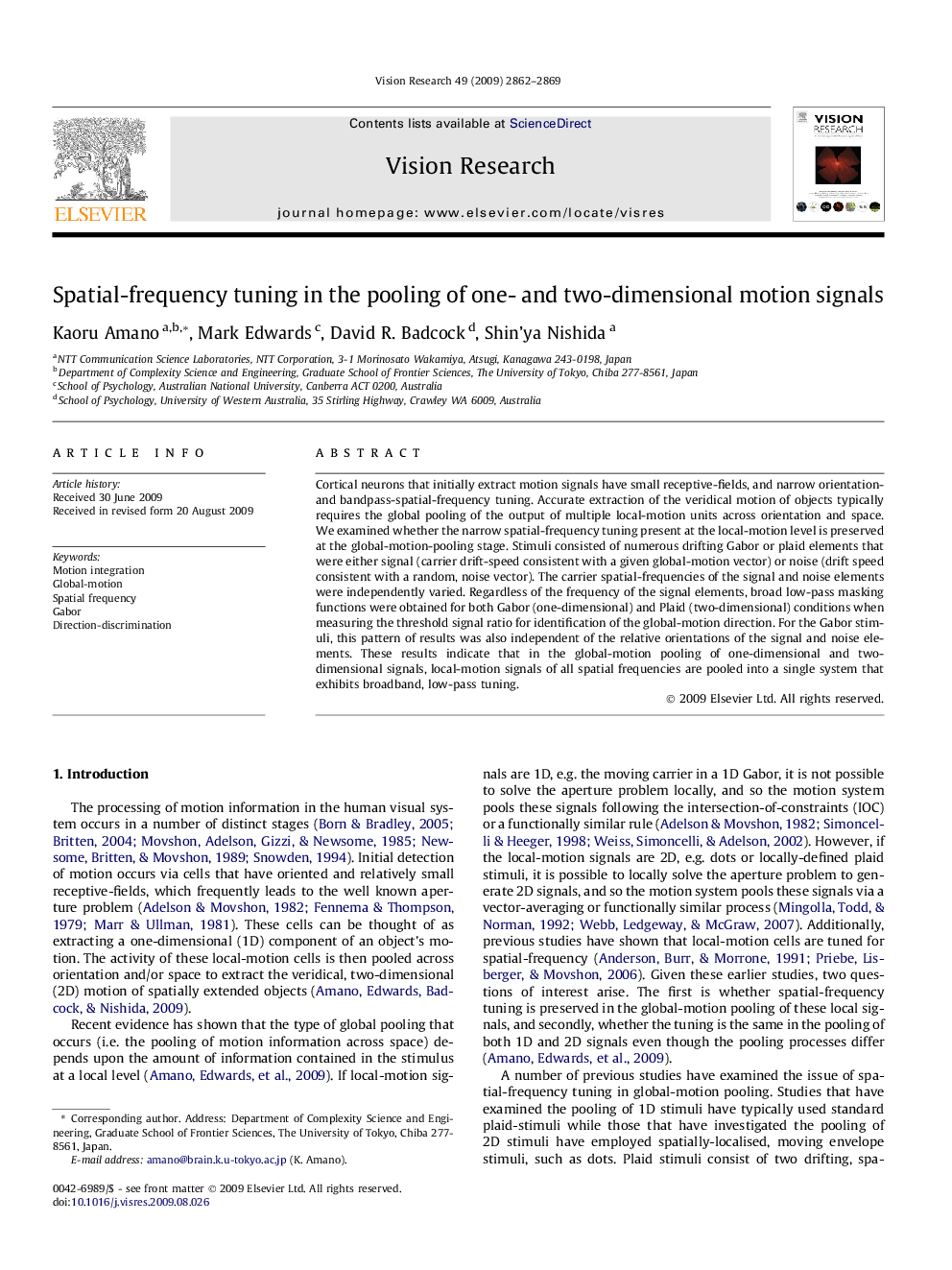| Article ID | Journal | Published Year | Pages | File Type |
|---|---|---|---|---|
| 4034984 | Vision Research | 2009 | 8 Pages |
Cortical neurons that initially extract motion signals have small receptive-fields, and narrow orientation- and bandpass-spatial-frequency tuning. Accurate extraction of the veridical motion of objects typically requires the global pooling of the output of multiple local-motion units across orientation and space. We examined whether the narrow spatial-frequency tuning present at the local-motion level is preserved at the global-motion-pooling stage. Stimuli consisted of numerous drifting Gabor or plaid elements that were either signal (carrier drift-speed consistent with a given global-motion vector) or noise (drift speed consistent with a random, noise vector). The carrier spatial-frequencies of the signal and noise elements were independently varied. Regardless of the frequency of the signal elements, broad low-pass masking functions were obtained for both Gabor (one-dimensional) and Plaid (two-dimensional) conditions when measuring the threshold signal ratio for identification of the global-motion direction. For the Gabor stimuli, this pattern of results was also independent of the relative orientations of the signal and noise elements. These results indicate that in the global-motion pooling of one-dimensional and two-dimensional signals, local-motion signals of all spatial frequencies are pooled into a single system that exhibits broadband, low-pass tuning.
